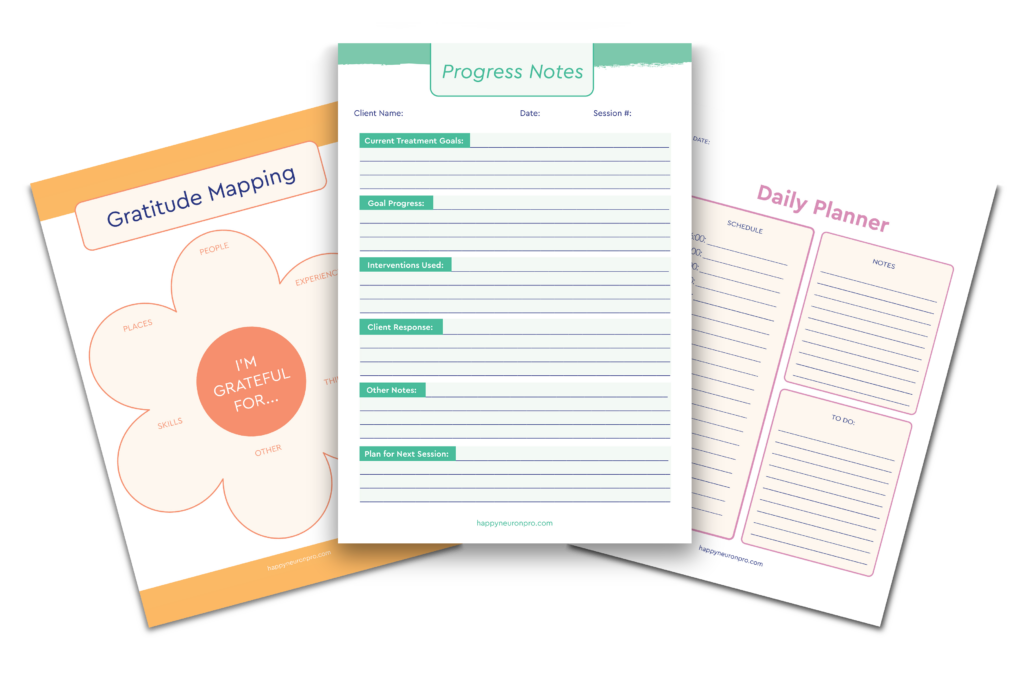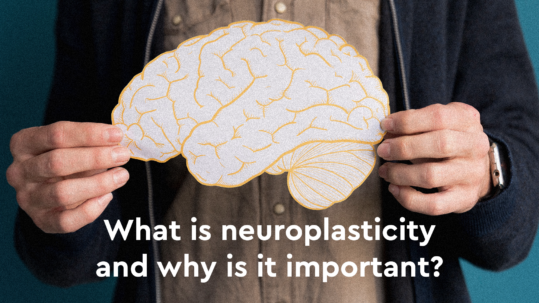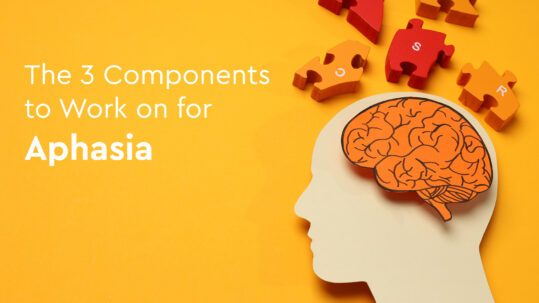How to Help Clients Regulate Emotions
Emotion regulation describes how someone may shift the experience of their emotions and control how they express them. For example, someone with healthy emotion regulation skills may be able to calm themselves down when upset or express their feelings without yelling.
Emotion regulation can be challenging, even for cognitively healthy individuals. With a cognitive impairment, it may become even more difficult. However, emotion regulation is a vital skill for getting through day-to-day life. Without it, we wouldn’t be able to communicate effectively or enjoy safe, amicable relationships with family, friends, coworkers, and others. While it can be a challenge to master this skill, clinicians can help their clients become experts at recognizing and regulating their feelings. Here are our best tips for helping clients learn how to regulate emotions.

Identifying emotions
Some emotions are easier to identify than others. Becoming attuned to your subtle emotions can allow you to understand yourself better. For example, most people can probably feel and point out the difference when they’re feeling happy versus when they’re feeling sad. However, emotions like shame, embarrassment, confusion, anger, regret, and uncertainty can be difficult to identify and navigate.
Try labeling the emotion. (Are you feeling sad, confused, hurt?) Then, if possible, pinpoint what caused that emotion. This thought process might sound like, “This feels like anger. But that label doesn’t feel quite right. I think I’m feeling disappointed. I’m disappointed and frustrated because I hoped for a different result in that conversation.”
Processing Emotions
Emotionally healthy people tend to do what is known as “processing” their emotions. This refers to actually experiencing and feeling an emotion, rather than trying to ignore it or push it away. Although it may seem counterintuitive, feeling an emotion contributes to healthy emotion regulation. In other words, “feel it to heal it!”
Practices that can help with feeling and processing emotions include:
- Writing in a journal about the emotions you’re feeling, and what caused them. What does the emotion feel like? What events led up to feeling this way?
- Simply take some time to experience your emotions. Sit or lay down and let yourself feel it. If you need to cry, that’s okay! Let the tears out.
- Validate the emotion by reminding yourself that it’s okay to experience emotions.
- Take a break! Sometimes emotions are too difficult to feel and understand right away. It’s okay to give yourself a break with something easy or distracting like reading a book.
Learning emotion regulation techniques
Emotion regulation can be divided into two types, and both can work together to effectively manage emotions. The first is physical regulation, which includes methods for physically calming the body’s reaction to emotions, such as breathing exercises. The second is stress management or strategies that can help you deal with feelings in a healthy way. Let’s explore some ways to utilize both types of emotion regulation.
Breathing exercises
Physical emotion regulation refers to calming the body when in a heightened emotional state. When we’re stressed, angry, or upset, our heart rate increases and cortisol levels increase in the brain. Deep breaths can help to lower these and return the body and mind to a more balanced state, where we may be able to handle emotions more effectively.
Simply taking slow, deep breaths can be helpful. Many also find specific breathing techniques helpful, such as “box breathing.” This is where you breathe in while counting to 4, hold for 4, breath out while counting to 4, and hold for 4 again. This slow, measured way of breathing tends to calm the body and mind.
Compassion
Part of dealing with emotions is giving yourself and others compassion for the emotions that you’re feeling. It can be uncomfortable to experience complicated emotions, whether you are the one experiencing them or someone close to you is feeling them. However, it’s important to recognize that emotions have a purpose and they are a natural part of life. Emotions provide valuable information. For example, feeling angry or upset is a signal that something isn’t working for you, and perhaps something in your circumstance needs to change. Or, you may need to figure out how to accept a circumstance that you cannot change.
For example, if you’re upset because a class is exceptionally difficult, this is important information. It could mean that the class isn’t a correct fit for you, or it could mean that you need to ask for help, and put more effort into the class.
When we understand that no emotion is “incorrect,” they are simply reactions to the situations we find ourselves in, we can become less judgmental of emotion. You can have compassion for yourself and the emotions you’re experiencing, even if they’re uncomfortable or unpleasant.
You can also practice having compassion for others’ emotions. Sometimes this is more difficult, especially in conflict. If you make someone feel upset, it might feel easier to brush it off and think that their emotions aren’t valid. However, the story is probably very different from their side. You can try to envision how they feel from their side, and speak to them in a kind and calm way rather than in an agitated way. This may help the other person calm down too, leading to better communication.
While it’s tough to face difficult emotions in ourselves and others, having compassion for these emotions is a skill that will serve you throughout life.
Healthy self-expression
The ability to express emotions healthily is a crucial skill for emotion regulation, problem-solving, and communication. Self-expression includes ways to privately express your emotions, such as journaling, or expressing them to someone else in a conversation or message.
It can be beneficial to write out your thoughts and emotions. Research shows writing may positively impact emotions. It may also help to clarify your thoughts and feelings before expressing them to someone else. Other forms of expression, such as art, music, or physical exercise, may also regulate emotions.
When it comes to expressing your emotions to someone else, for example during a conflict in a relationship or friendship, there are ways to regulate yourself and express healthily.
Name your feelings
Naming what your feeling is can be a surprisingly simple tactic to help you express yourself in a conversation. For example, “I’m feeling _____ because _______,” is a great template for starting a problem-solving conversation. “I’m feeling sad because I don’t feel like you’re listening to me” is likely more effective than phrasing it in an accusatory way, such as “Why aren’t you listening?”
Seek to understand while using kind language
In a difficult conversation, people are often only focused on expressing themselves and not so focused on listening. Aim to do both. Express yourself as calmly as possible, and listen when the other person speaks.
When caught up in a tough or emotional conversation, people often slip into unkind language, like name-calling. This kind of communication rarely solves problems. Try to use gentle language, rather than reactively saying something you may regret later.
Setting goals
Setting goals gives you a clear path of what you want to accomplish. It allows you to see your progress in regulating emotions. These goals could be specific – for example, “I want to be able to talk to my mom without either of us raising our voices.” Or they could be more broad – for example, “I want to write down my feelings more often.”
We recommend going the extra mile by writing a SMART goal. This makes the goal specific and measurable, which may help to keep you on track.
Using Printable Resources
Writing can be a helpful tool, whether you’re setting goals, identifying emotions, or working on regulating emotions. Getting it down on paper can help to organize your thoughts and look at things more objectively. With our Session Resources Pack, you’ll have access to activities that can be printed as many times as needed, to help with goal setting, emotional exploration, and self-reflection.
If you’re a clinician, explore these fun and insightful activities as well as educational posters for your office on our Worksheets site!

Conclusion
If you’re working with clients who have difficulty regulating their emotions, there’s a lot to explore and many strategies that may help. From identifying emotions to self-compassion, learning the complex skill of emotion regulation can be challenging, but incredibly rewarding in how it can affect communication and relationships.









